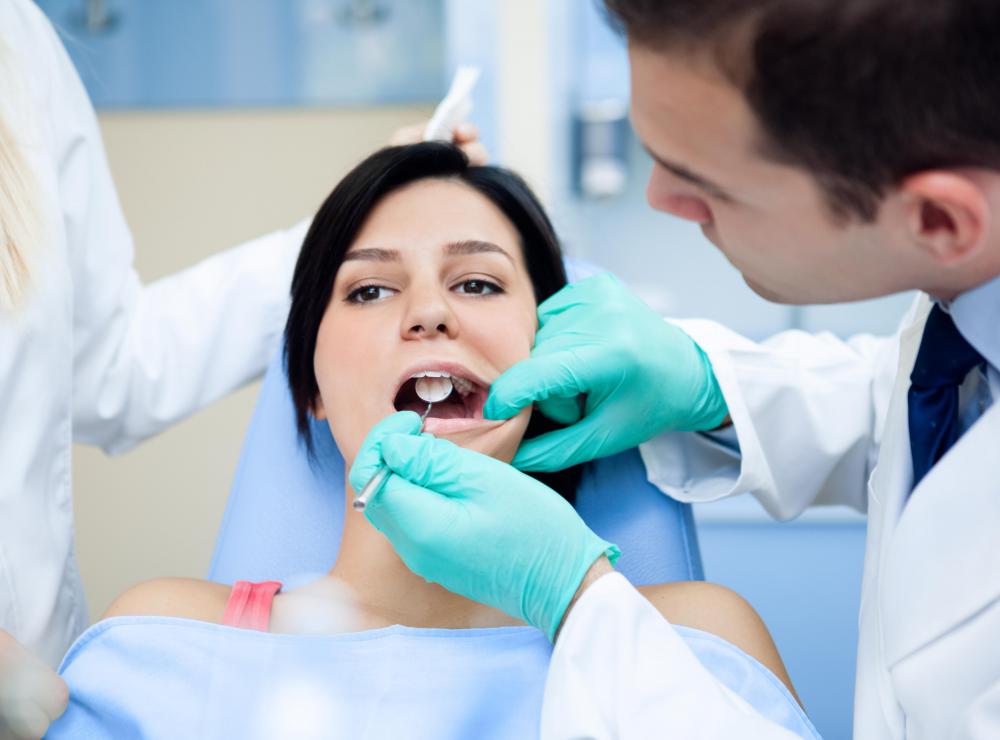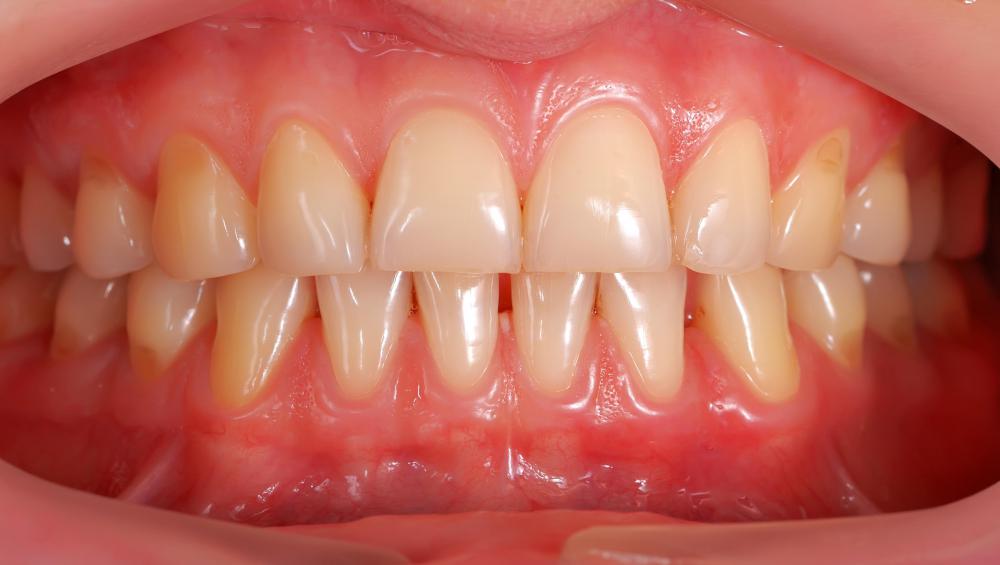At WiseGEEK, we're committed to delivering accurate, trustworthy information. Our expert-authored content is rigorously fact-checked and sourced from credible authorities. Discover how we uphold the highest standards in providing you with reliable knowledge.
What Is Gingival Tissue?
Gingival tissue is the area around the root of the tooth that helps keep the tooth in place. Depending on where the gingival tissue is in relation to the tooth, it may be called one of two names. The gum tissue that is attached to the alveolar bone is called free gingiva. Attached gingiva refers to the gum tissue that is found toward the top of the tooth. Gum tissue is also found between teeth.
Maintaining healthy gums is important to preventing gum disease. The first stage of gum disease, gingivitis, is caused by bacteria found in plaque. The bacteria inflames the surrounding gingival tissue, causing the tissue to swell and bleed when brushed. Gingivitis can be treated by a dentist, but the best way to prevent it is to brush daily in order to remove plaque. Plaque that isn’t removed turns into calculus, or tartar. Tartar cannot be removed by a simple toothbrush but must be scraped off with special tools.

A heavy buildup of tartar on the gingival tissue leads to the second stage of gum disease, periodontitis. Bacteria in the tartar produce sulfuric waste, damaging the gum tissue to create a deep pocket. While all teeth have pockets, their normal depth does not exceed 3mm. Moderate periodontitis occurs when the pockets reach depths of 5mm, and advanced periodontitis occurs at 6mm. Although it is a painless disease, periodontitis will evenutally destroy the root of the tooth, leading to tooth loss if untreated. Most cases of gum disease affect more than one tooth.

Fortunately, gum disease can be treated and reversed if it is caught early enough. For moderate periodontitis, the first level of treatment is non-surgical. Over a period of several visits, the patient will have his teeth scaled and planed to eradicate the bacteria. The dentist may elect to use a local anesthetic during this deep cleaning that extends all the way down to the roots of the teeth. Traditionally this treatment involved a lot of scraping, but an ultrasonic tool is now available that is more comfortable for the patient. After completing the cleaning of the gingival tissue, antiobiotic fibers may be placed at the root to kill off any remaining bacteria. This treatment is extremely effective, and many dental patients will find that the health of their gums improves greatly.

Patients who have advanced gum disease or whose disease was not eradicated through non-surgical treatment will have to undergo surgery. The patient will have diseased tissue removed, the remaining tissue thoroughly cleaned, and any damaged teeth may be reconstructed. Stitches in the gum can hold it in place around the root of the tooth at a lower depth to help prevent future pockets from forming.
AS FEATURED ON:
AS FEATURED ON:


















Discuss this Article
Post your comments